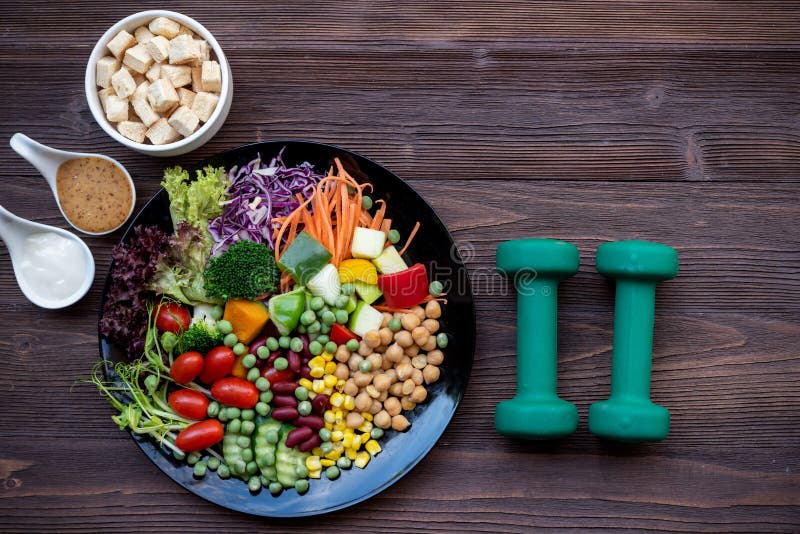Introduction: Why Are Traditional Exercises No Longer Enough?
Have you ever felt exhausted or in pain while performing simple daily tasks, such as lifting heavy grocery bags, playing with your children, or even getting up from a low chair? If your answer is yes, you are not alone. Many people focus on traditional exercises that target isolated muscles, such as isolation exercises in bodybuilding, which may give a good appearance, but do not necessarily translate into true strength and efficiency in daily life.
This is where the concept of "Functional Fitness" emerges as a revolutionary approach that redefines the relationship between physical training and real life. It is not just a new fad, but a training philosophy aimed at preparing your body to become more capable of performing daily activities with minimal effort and maximum safety. Functional fitness is the bridge that connects what you do in the gym with what you actually need in your daily life.
What is Functional Fitness? The Concept and Foundation
Functional fitness can be defined as training that mimics and improves the movements the body naturally performs in daily life. Instead of isolating a single muscle, functional exercises focus on compound movements that engage multiple muscle groups simultaneously, just as happens when lifting a box or climbing stairs.
The primary goal of this type of training is to improve the body's functional performance, i.e., its ability to work as an integrated unit. This includes improving essential elements such as:
Balance: The ability to maintain the center of gravity during movement or stillness. Coordination: The ability of the nervous and muscular systems to work together smoothly. Core Strength: The strength of the torso muscles that support the spine and help transfer force between the limbs. Flexibility and Mobility: The healthy range of motion for joints and muscles.
The Fundamental Difference Between Functional and Traditional Training
To understand the importance of functional fitness, it must be compared to traditional training (such as isolated weightlifting):
| Feature | Functional Training | Traditional Training (Isolation Training) |
|---|---|---|
| :--- | :--- | :--- |
| <strong>Main Goal</strong> | Improving performance in daily life and injury prevention. | Increasing muscle size or maximum strength for an isolated muscle. |
| <strong>Type of Movement</strong> | Compound (Multi-joint) movements that mimic daily activities (e.g., squatting, pushing, pulling). | Isolation (Single-joint) movements focusing on one muscle (e.g., bicep curl). |
| <strong>Tools Used</strong> | Free weights, medicine balls, resistance bands, body weight. | Fixed exercise machines, free weights. |
| <strong>Practical Result</strong> | A more efficient body, better balance, and reduced back pain. | Increase in muscle mass and aesthetic appearance. |
The Seven Benefits of Adopting Functional Fitness
The benefits of functional fitness are not limited to athletes; they extend to everyone, regardless of age or fitness level.
1. Injury Prevention and Improved Stability
This benefit is the most important of all. By strengthening the core and stabilizing muscles around the joints (such as the shoulders, hips, and knees), the body becomes less susceptible to injuries resulting from sudden or incorrect movements. Functional training teaches the body how to absorb shock and move safely.
2. Enhancing Daily Performance Efficiency
Imagine training to lift a heavy box off the floor (Deadlift) or push it overhead (Overhead Press). These exercises perfectly mimic lifting a child or placing a suitcase on an overhead rack. The more functionally strong you are, the easier and less stressful your daily tasks become.
3. Improved Balance and Coordination
Many functional exercises are performed standing or on one leg, forcing your muscles to work hard to maintain balance. This is vital as you age, as it significantly reduces the risk of falling.
4. Building Integrated Core Strength
Instead of traditional abdominal exercises, functional fitness focuses on strengthening the torso as a whole (front, back, sides). Core strength is the key to standing upright, improving posture, and alleviating chronic lower back pain.
5. Increased Range of Motion and Flexibility
Functional movements require a full range of motion for the joints. This helps maintain the flexibility of joints and soft tissues, making you more agile and capable of movement.
6. Burning More Calories
Since functional exercises engage large muscle groups simultaneously, they increase the heart rate and consume significantly more energy compared to isolation exercises, making them very effective for weight management.
7. Adapting to Changing Life Demands
Whether you are carrying a child, moving furniture, or hiking long distances, functional fitness ensures your body is ready to adapt to any physical challenge life throws at you.
The Most Important Basic Functional Movements
Basic functional movements can be divided into six main patterns that mimic all the activities we perform daily. Your training program should include exercises from each category:
1. Pushing Movements
Used to push objects away from the body or push the body upwards. Examples from Life: Pushing a shopping cart, pushing a heavy door, getting up from the floor. Suggested Exercises: Push-ups, Dumbbell Overhead Press.
2. Pulling Movements
Used to pull objects towards the body or pull the body towards a fixed object. Examples from Life: Pulling a vacuum cleaner, opening a heavy door, rowing a boat. Suggested Exercises: Pull-ups/Chin-ups, Dumbbell Rows.
3. Squatting Movements
Used to lower and raise the center of gravity. Examples from Life: Sitting on a chair, picking something up from the floor, using the toilet. Suggested Exercises: Bodyweight Squats, Bulgarian Split Squats.
4. Hinging Movements
Used to bend the body at the hips while keeping the back straight. Examples from Life: Bending over to pick up a pen, taking something out of the car trunk. Suggested Exercises: Deadlift, Single-Leg Romanian Deadlift.
5. Carrying Movements
Used to transport weights from one place to another. Examples from Life: Carrying grocery bags, carrying a child, carrying a heavy backpack. Suggested Exercises: Farmer's Walk, Overhead Carry.
6. Rotation and Anti-Rotation Movements
Used to rotate the torso or to resist a force trying to rotate it. Examples from Life: Turning to the back seat in the car, throwing a ball, mowing the lawn. Suggested Exercises: Pallof Press, Russian Twist.
Practical Tips for Applying Functional Fitness in Your Daily Routine
You don't need to spend hours in the gym to adopt functional fitness. You can easily integrate these principles into your daily life:
1. Start with Body Weight First
The best way to start is by mastering your basic movements using your body weight. Make sure you can perform 10-15 repetitions of squats, push-ups, and lunges correctly before adding any weights.
2. Focus on Quality, Not Quantity
In functional training, the correct form of movement is more important than the weight lifted. Incorrect movement in a compound functional exercise can lead to a serious injury. Watch instructional videos, or consult a trainer to ensure you master the performance technique.
3. Use Simple and Effective Tools
There is no need for complex machines. You can rely on simple and effective tools such as: Medicine Balls: Excellent for rotation and explosive strength exercises. Resistance Bands: Great for warm-up exercises and strengthening stabilizing muscles. Dumbbells and Kettlebells: Provide an asymmetrical challenge that mimics carrying objects in real life.
4. Integrate Exercises into Daily Activities
Turn your daily tasks into functional exercises: When Lifting Weights: Use the Deadlift technique to lift grocery bags or boxes, bending your knees and hips instead of your back. When Standing: Try standing on one leg while brushing your teeth to enhance balance. When Walking: Perform a "Farmer's Walk" by carrying your bag or purchases in one hand, then switching hands to strengthen the core asymmetrically.
5. Do Not Neglect Movement in All Planes
Remember that life does not happen in a straight line. Make sure your program includes movements in all planes of motion: Sagittal Plane: Forward and backward movements (e.g., squats and lunges). Frontal Plane: Side-to-side movements (e.g., lateral lunges).
- Transverse Plane: Rotation and twisting movements (e.g., Russian Twist).
Suggested Weekly Functional Fitness Program
You can start with a simple program that focuses on compound movements, three times a week, with a rest day in between.
| Day | Primary Focus | Exercise Examples (3-4 sets, 10-15 reps) |
|---|---|---|
| :--- | :--- | :--- |
| <strong>Day 1</strong> | <strong>Lower Body Strength and Push</strong> | Bodyweight Squats, Forward Lunges, Push-ups, Farmer's Walk. |
| <strong>Day 2</strong> | <strong>Active Rest</strong> | Brisk walking, light yoga, or joint mobility exercises. |
| <strong>Day 3</strong> | <strong>Upper Body Strength and Pull</strong> | Dumbbell Rows, Overhead Press, Plank, Romanian Deadlift. |
| <strong>Day 4</strong> | <strong>Rest</strong> | |
| <strong>Day 5</strong> | <strong>Full Body and Balance</strong> | Bulgarian Split Squats, Single-Leg Deadlift, Pallof Press, Burpees or Mountain Climbers. |
| <strong>Day 6 & 7</strong> | <strong>Rest or Recreational Activity</strong> | Swimming, cycling, or long-distance walking. |
Conclusion: Invest in Your Body, Invest in Your Life
Functional fitness is more than just a training system; it is an investment in the quality of your daily life. When you train the movements you actually need, you not only build stronger muscles, but you build a body that is more flexible, balanced, and capable of facing the challenges of daily life with confidence and ease.
Remember that the goal is not to look like a professional athlete, but to perform like a professional athlete in your own life. Start today by integrating these principles into your routine, and you will notice the difference in every step you take, everything you lift, and every moment you enjoy without pain or exhaustion. Functional fitness is your key to living a more efficient and vibrant life.
--- Note: Please consult a doctor or physical therapist before starting any new exercise program, especially if you suffer from any chronic health conditions or previous injuries.



